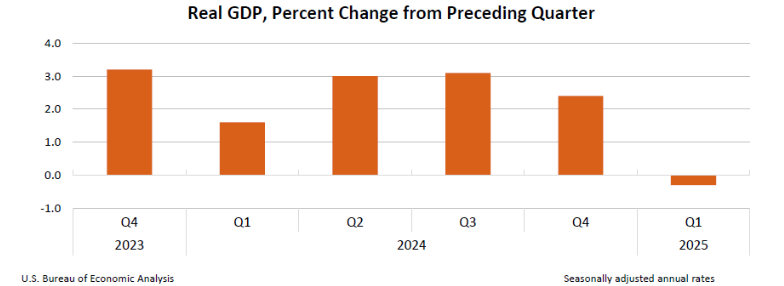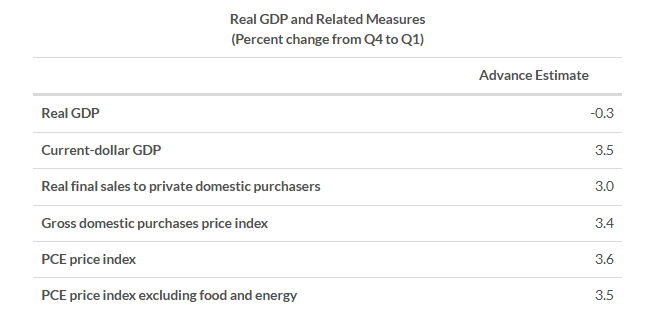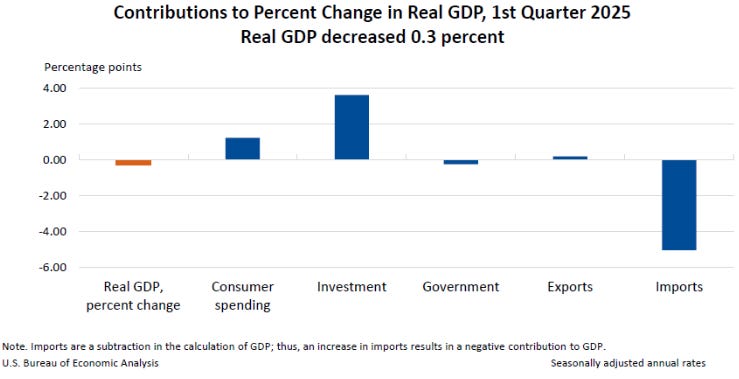The Latest GDP Numbers – Why the Market Keeps Rising Despite Weak Data
🔹 First, What Is GDP and How Is It Calculated?
GDP (Gross Domestic Product) measures the total value of goods and services produced within a country over a given period. One of the most common and insightful ways to calculate it is via the Expenditure Approach:
📐 Expenditure Approach (My Preferred Method)
Calculates GDP through total spending in the economy.
Formula:
GDP = C + I + G + (X – M)
Where:
C = Consumption
I = Investment
G = Government Spending
X = Exports
M = Imports
Now that we understand how GDP is calculated, let’s look at the key economic figures that followed.
What immediately stands out is the comparison between Real GDP and Real Final Sales to Private Domestic Purchasers.
Here’s the key insight: consumer spending in the U.S. remains strong — there’s no significant sign of weakening demand in the private sector. 🛍️
❓ So Why the Sharp Drop in Real GDP?
The chart below reveals the answer. The main driver behind the GDP drop was a massive surge in imports, particularly from companies moving goods into the U.S. in anticipation of future tariffs — a practice known as Tariff Frontloading.
Essentially, firms rushed to bring products into the U.S. before higher import duties kicked in. This spike in imports negatively affects GDP via the (X – M) component of the formula — as imports subtract from total GDP. 📉📦
With this understanding, it becomes clear that the GDP decline was not driven by weak demand, but rather by technical trade-related factors. And that explains why markets continued their rally — because the underlying economy remains resilient. 📈💪
I hope this post gave you a clearer perspective on the latest GDP data and how to interpret it beyond the headlines.
Stay informed and unlock alpha with Gauch-Research. 🚀




